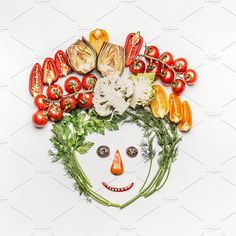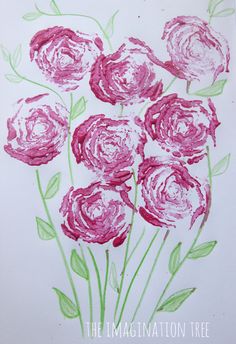Vegetable Impression
Vegetable impressions, also known as vegetable printing or stamping, is a unique form of art that utilizes fresh vegetables to create intricate patterns and designs on various surfaces. This technique not only fosters creativity but also promotes an appreciation for the natural world, making it a popular activity among artists, educators, and hobbyists alike. In this exploration, we will delve into the history, techniques, benefits, and applications of vegetable impressions.
Historical Context
Origins of Vegetable Printing
The practice of using natural materials for artistic expression dates back centuries. Ancient cultures often utilized natural pigments, plants, and vegetables for dyeing fabrics and creating artwork. In Asia, for example, vegetable dyes have been used in traditional textiles for thousands of years.
The specific practice of vegetable printing as we know it today likely evolved in the 20th century as artists sought to explore non-traditional methods. The use of vegetables in art gained popularity in the 1960s and 70s as part of the broader movement towards eco-friendly and sustainable practices in art and design.
Techniques and Materials
Choosing the Right Vegetables

A wide variety of vegetables can be used for printing, each offering different textures and shapes. Common choices include:
- Potatoes: Cut in half or into shapes, they create clear, bold impressions.
- Carrots: Sliced into rounds or cut into different shapes, carrots produce detailed patterns.
- Celery: The base of celery can create unique floral designs.
- Bell Peppers: When cut in half, they can produce star-shaped prints.
- Okra: The cross-section of okra produces beautiful star-like impressions.
Preparing the Vegetables
- Cutting: Vegetables should be cut to expose their inner texture and shape. This can be done in various ways depending on the desired pattern.
- Inking: Natural or commercial fabric paints, inks, or dyes can be applied to the vegetable surface. Alternatively, water-based paints are effective for printing on paper or fabric.
- Stamping: The inked vegetable is pressed onto the desired surface, such as paper, canvas, or fabric. Even pressure should be applied to ensure an even impression.
Printing Process
- Surface Preparation: The chosen surface should be clean and dry. If using fabric, pre-wash it to remove any chemicals.
- Application: Dip the cut vegetable into paint or ink, ensuring it is evenly coated. Press it firmly onto the surface and lift it straight up to avoid smudging.
- Layering: To create more complex designs, layers of different vegetable stamps can be used. This allows for an interplay of colors and patterns.
- Drying: Allow the printed material to dry completely before handling or using it further.
Benefits of Vegetable Impressions
Creative Expression
Vegetable impressions provide a unique way to express creativity. The spontaneous nature of the process allows artists to experiment with colors, shapes, and patterns. It encourages an exploratory mindset, as the outcome can be unpredictable, leading to innovative results.
Environmental Awareness
Using natural materials for art promotes environmental consciousness. It highlights the beauty and versatility of vegetables while encouraging sustainable practices. Artists often emphasize the importance of reducing waste by using vegetables that might otherwise be discarded.
Educational Value
Vegetable printing is an excellent educational tool for teaching children and adults alike. It can be used to explore concepts such as:
- Botany: Understanding plant anatomy and the diversity of vegetables.
- Color Theory: Experimenting with mixing colors and creating new shades.
- Art Techniques: Learning about printing methods, texture, and design principles.
Therapeutic Effects
Engaging in creative activities like vegetable printing has been shown to reduce stress and promote relaxation. The tactile experience of handling fresh vegetables and the joy of creating can be therapeutic, making it a popular activity in art therapy.
Applications of Vegetable Impressions
Art and Craft

Vegetable impressions can be used in various art forms, including:
- Textile Design: Creating unique patterns on fabrics for clothing, home decor, and accessories.
- Printmaking: Incorporating vegetable prints into larger mixed-media artworks.
- Stationery: Designing greeting cards, invitations, and decorative paper.
Educational Settings
In classrooms, vegetable printing can be integrated into lessons on nature, art, and science. It can be a hands-on activity for students to learn about the life cycle of plants, the importance of sustainability, and the basics of printmaking.
Community Engagement
Vegetable printing workshops can be organized in community centers, festivals, or local art events. These workshops promote collaboration and creativity among participants, fostering a sense of community.
Conclusion
Vegetable impressions are a delightful blend of nature and creativity. This art form not only produces visually striking results but also fosters a deeper appreciation for the environment and the resources it provides. Whether used for personal expression, education, or community engagement, vegetable printing remains a versatile and enriching practice. As artists continue to explore innovative techniques and themes, vegetable impressions will undoubtedly maintain their place in the ever-evolving landscape of contemporary art. Embracing this form of artistic expression can lead to a greater understanding of both art and nature, making it a rewarding endeavor for all.
